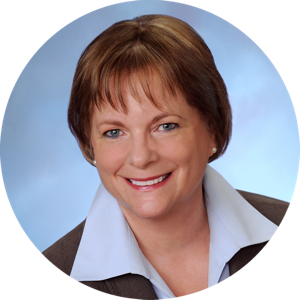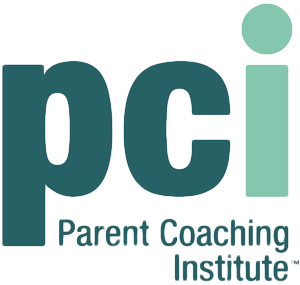Book Review:
Lift: Becoming a Positive Force in Any Situation

by Gloria DeGaetano, Founder and CEO of the Parent Coaching Institute, author of Parenting Well in a Media Age, winner of the 2007 Best Products i-Parenting Award.
After reading Robert E. Quinn's book, Change the World: How Ordinary People Can Achieve Extraordinary Results, I thought to myself, "This man wants us all to become saints!" Why? Because Change the World describes eight "seed principles" that if taken seriously and acted upon naturally leads to a course of compassionate action on behalf of others.

Lift: Becoming a Positive Force in Any Situation
Ryan W. Quinn and
Robert E. Quinn
Berrett-Koehler Publishers, San Francisco, 2009
254 pages
Robert Quinn's new book, Lift: Becoming a Positive Force in Any Situation, which he co-authored with his son Ryan Quinn, an assistant professor at the University of Virginia's Darden's School of Business, deepens that journey toward "sainthood." Lift reports a way for us to become positive change agents immediately in any situation we encounter by asking ourselves four basic questions: 1) What result do I want to create? 2) What would my story be if I were living the values I expect of others? 3) How do others feel about this situation? 4) What are three (or four or five) strategies I could use to accomplish my purpose for this situation?
Robert Quinn, who holds the Margaret Tracy Collegiate Professorship at the University of Michigan and is professor of management and organization in the Ross School of Business, has authored 16 books. Considered an innovative thinker and authority on positive change processes, he developed ACT—Advanced Change Theory—which The Parent Coaching Institute uses as integral to the successful PCI Parent Coaching Model™. The four questions discussed and promoted in Lift provide a foundational focus for applying ACT more thoroughly in daily activities when the business of life can often interfere with our good intentions to be kind, thoughtful, or proactive.
The question "How do people change and how do they do it deeply and sustainably in order to catalyze transformative societal changes?" captures our human longing to make a positive difference. Robert Quinn's books can be counted on to address and effectively answer this question. Now in Lift, with his son Ryan, the two provide a practical framework for keeping that longing alive and fulfilled. Lift is defined as a "psychological state in which a person is purpose-centered, internally directed, other-focused, and externally open." This dynamic internal state keeps us "lifted," thereby making us reliable lift-ers of others. And soon, as the authors demonstrate, our sphere of influence infuses with positivity and possibility—we naturally become role models for others as we enthusiastically undertake the self-discipline necessary to monitor and adjust our psychological states. "As within, so without," never seemed truer as I poured over the wisdom in this book.
The book begins with an overview of positive influence and the psychological state. As the Founder and CEO of The Parent Coaching Institute who has worked with parents for over 30 years, I was struck by one of the stories in the first chapter, told by Ryan, in which he explains using the four questions with his six year old son Mason. When we're dealing with a child who is having behavior issues such as Mason's ongoing, seemingly illogical tantrums, it's perfectly natural and normal for parents to be outside this graced psychological state of "lift." In fact, it's only a human impulse to coerce, impose, and strive for control as the situation escalates out of control. Parent and child become more closed, demanding and often angry—it's a mess. We've all been there as parents. Finding our way out can take its toll on our relationship with our child because most often the parenting advice is "to take" charge, or "speak firm and stand your ground," shutting our kids down even more…What parenting advice would have us "Walk a mile in your son's shoes?"
As I understand, the power of "lift" is to center deeply on how the other is experiencing the situation as we stay centered in our purpose and integrity. As Ryan explains how he tried hard to really understand his son, he got a flash of intuitive insight that resulted in a blessed moment between father and son, deepening understanding and respect for both of them. Throughout his story about Mason, Ryan shares how using the four questions brought him more in touch with his intuition and personal agency. It's a moving story and it really shows how "lift" can make a positive difference not only in the immediate but for the future, as well.
I won't ruin the story for you by telling all. You have to read it. Beyond the sweetness lies the enormous power in surrendering and allowing for authentic connection to occur. At The PCI™, we strive to help parents connect authentically and have found successful strategies imbedded in Appreciative Inquiry and Living System principles. The authors add an important layer here. Yes, while tried and true prescriptive parenting formulas often can work to resolve the immediate problem, it is difficult to translate an "allowance" strategy (rather than a "doing" strategy), such as found in Lift, into practical application for parents. Well, two business professors have done exactly that. Parent educators and parent coaches need to take note. With the backdrop of the book's four central questions, a practical framework, questions, and strategies can be developed to bring out the best in others, in any situation—even cranky six year olds given to habitual tantrums.
Chapter Two introduces the science, history and metaphor of "lift." It is here that the reader finds an understandable graphic which illustrates a competing-values framework. This has been used for organizational effectiveness. It consists of understanding the interaction of collaboration, control, creativity and competitiveness. For instance, the value of collaborating often competes with control. Control is necessary at times in order to move forward, to make decisions, but collaboration is a powerful approach for productive teams. And while competitiveness in the marketplace is essential, it often constrains the creativity of individuals within the organization to compete effectively. Bob and Ryan Quinn use this framework to move from deep change to the psychological state of "lift," juxtaposing the four central questions with each of the four competing values. Control enables a person to be internally directed, examining his or her integrity. Collaboration keeps us other focused, to see others as people with legitimate needs, feelings and wants. Creativity enables us to remain externally open. And competitiveness enables us to keep our purpose, which is usually used to create extraordinary results. This chapter is extremely helpful for understanding the interaction between and among the four questions, demonstrating the dynamic energy inherent in their execution.
Chapter 3 provides an overview of ways to move from problem solving to what the authors call "purpose finding." This is a very inspirational way to look at challenges, and it fits beautifully with the concept that our challenges, although always there, don't have to drag us into despair or alienation. The chapter sets the stage for the next eight chapters—the core of the book.
These chapters are paired around the four basic questions. For instance, Chapter 4 explains how to become more purpose-centered, while Chapter 5 looks at ways that get us out of being purpose-centered. Combined, the two chapters provide a wealth of information for staying within our purpose and answering question 1) What results do I want to create?
The next two chapters focus on becoming more internally directed, and support our living by the values we expect of others. Chapters 8 and 9 examine how we can truly understand how others feel about a situation we would like to have changed. An important component of becoming other-focused, according to the Quinns, is not being afraid of feedback from others. This is a common human obstacle to positive change and the authors normalize our fear of feedback, allowing us to use our fear for deep curiosity about ourselves and others rather than through anxious judgments which really have no deep change effects.
Chapters 10 and 11 help us think about becoming more externally open. Chapter 11 contains a table that summarizes the characteristics of "lift." This table is an easy reference tool which organizes the important components and qualities that will keep us purpose-centered, internally-directed, other-directed, and externally open. With a glance at the table in Chapter 11, the reader can get an idea of what types of strategies would be effective to stay in these states as opposed to the states of " comfort-centered, externally directed, self-focused, and internally closed." Those are the easy states to revert to—especially when confronted with our children's tantrums, too many bills to pay, or other common everyday stresses.
Despite all the challenges, Robert and Ryan Quinn call us to be more—more fully-present, more deeply engaged, and more thought-full all around. They urge us to move from being "comfort-seekers" to "creators of opportunity," from spectators to fully-engaged participants. While this isn't exactly sainthood, it's still tough work, worth every laborious minute—not for our reward in Paradise, but for those daily rewards, like when our children melt into our arms after a meltdown and show us they know who we are. That they know we love them beyond measure and all is well. Pure Heaven! And Lift brings us many more such moments. Count on it!
Gloria DeGaetano is CEO and Founder of The Parent Coaching Institute. For information about Gloria's keynotes and workshops, please contact Gloria DeGaetano by phone at (425) 753-0955 or at info@GloriaDeGaetano.com.
Copyright © 2010 Gloria DeGaetano, all rights reserved. No reprinting rights granted without the author's permission.
